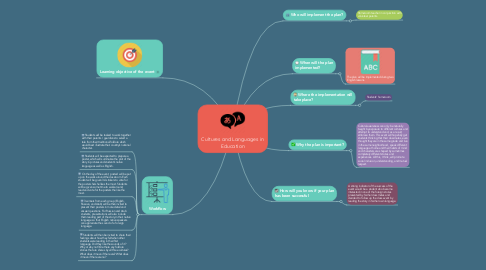Cultures and Languages in Education
by Eugene Permiakov

1. Workflow
1.1. Students will be tasked to work together with their parents / guardians to select a tale from their traditional folklore which would best illustrate their country’s national character.
1.2. Students will be expected to prepare a poster, which will summarize the plot of the story in pictures and student’s native language as well as English.
1.3. On the day of the event, posted will be put up on the walls around the classroom. Each student will be given 3-4 stickers to vote for the posters he/she likes the most. Students will be given some time to walk around, read and vote for the posters the like the most.
1.4. 3 winners from each group (English, Russian, and Arab) will be then invited to present their posters in more detail and answer questions. For Russian and Arab students, presentations will also include them reading part of the story in their native language so that English native speakers can appreciate the sound of a foreign language.
1.5. Students will then be invited to share their feelings about how they felt when other students were reading in their first language. Did they like the sounds of it? Why or why not? Are there any folklore stories that are shares by all three cultures? What does it mean if there are? What does it mean if there are no?
2. Learning objective of the event
3. Who will implement the plan?
3.1. Homeroom teacher in conjunction with volunteer parents.
4. When will the plan implemented?
4.1. The plan will be implemented during two English lessons.
5. Where the implementation will take place?
5.1. Students’ homeroom
6. Why the plan is important?
6.1. Cultural awareness can only be naturally taught by exposure to different cultures and attempt to understand and, as a result, embrace them. This event will hopefully get students thinking that their classmates, even thought they are in the same grade and live in the same neighborhood, speak different language at home and their habits of mind and characters are shaped by sometimes completely different stories and experiences. All this, I think, will promote social inclusion, understanding, and mutual respect.
7. How will you know if your plan has been successful
7.1. A strong indicator of the success of the event would be a student who became interested in one of the foreign stories presented by his/her classmates and decided to follow up the class event by reading the story in his/her own language.


